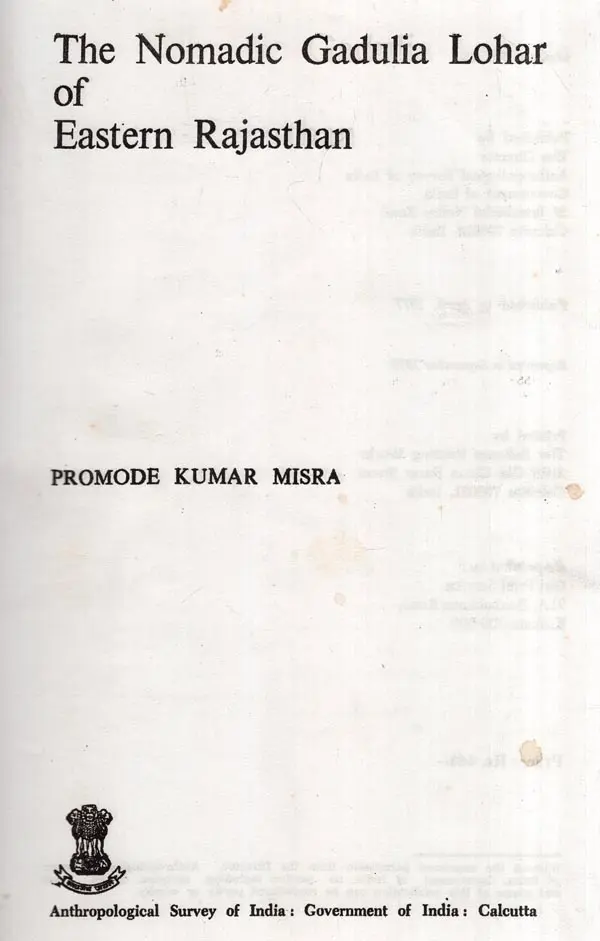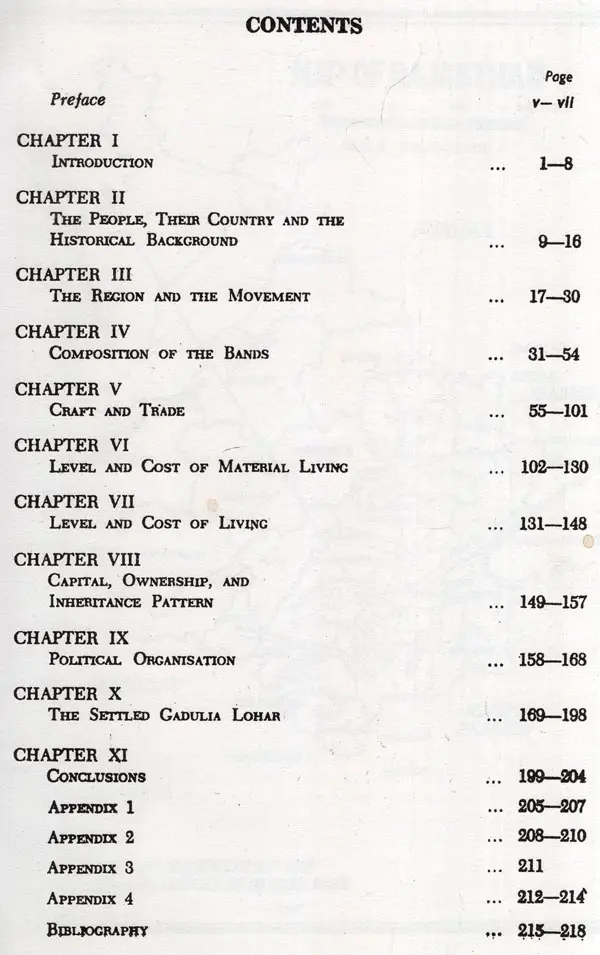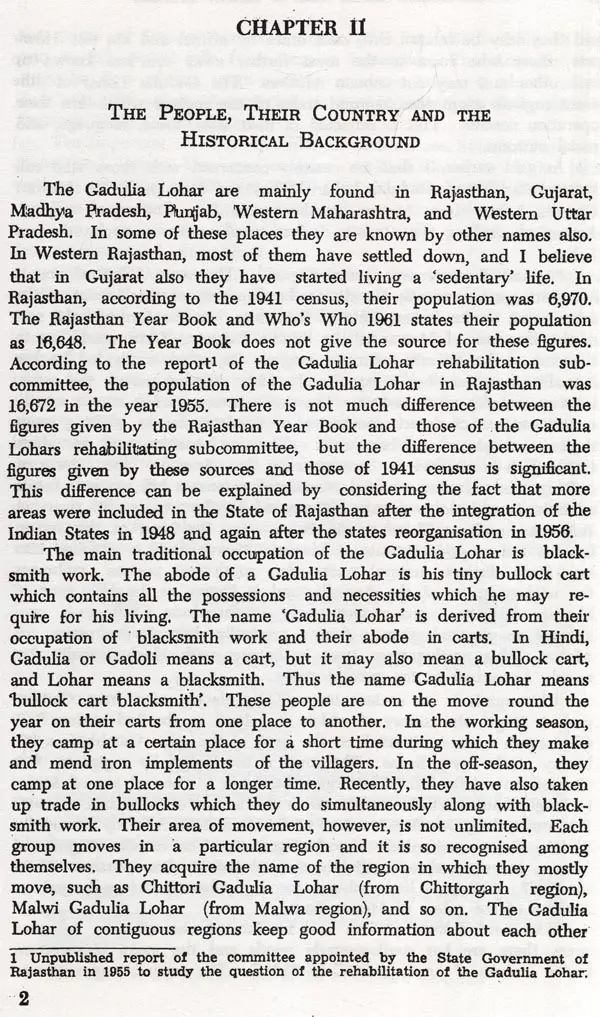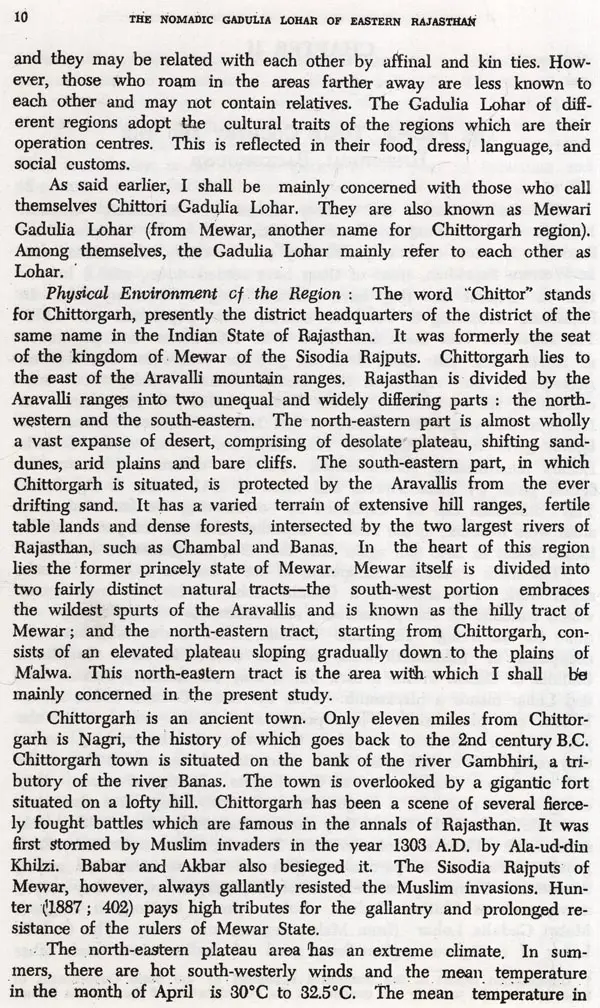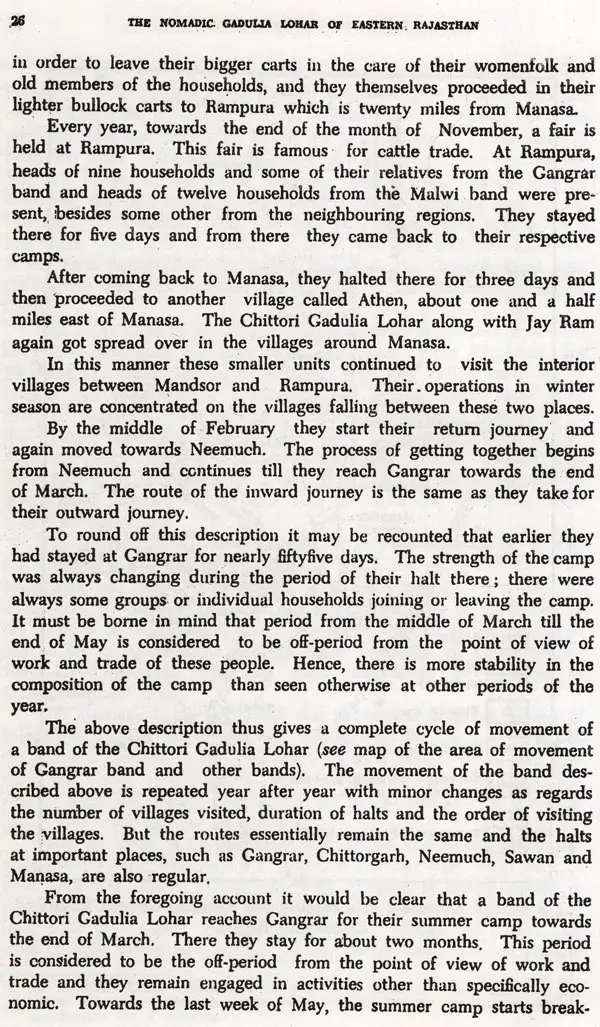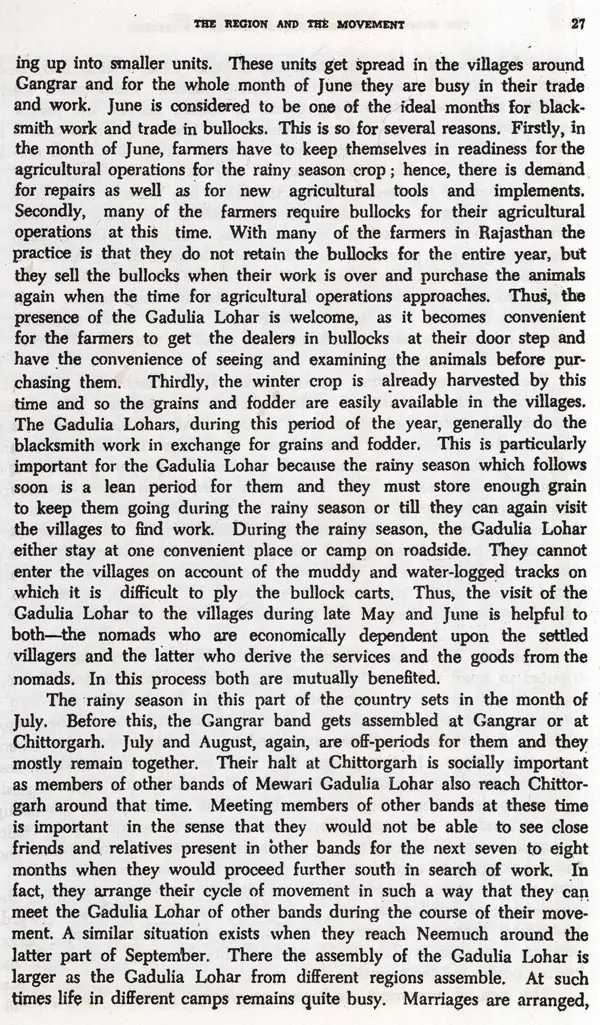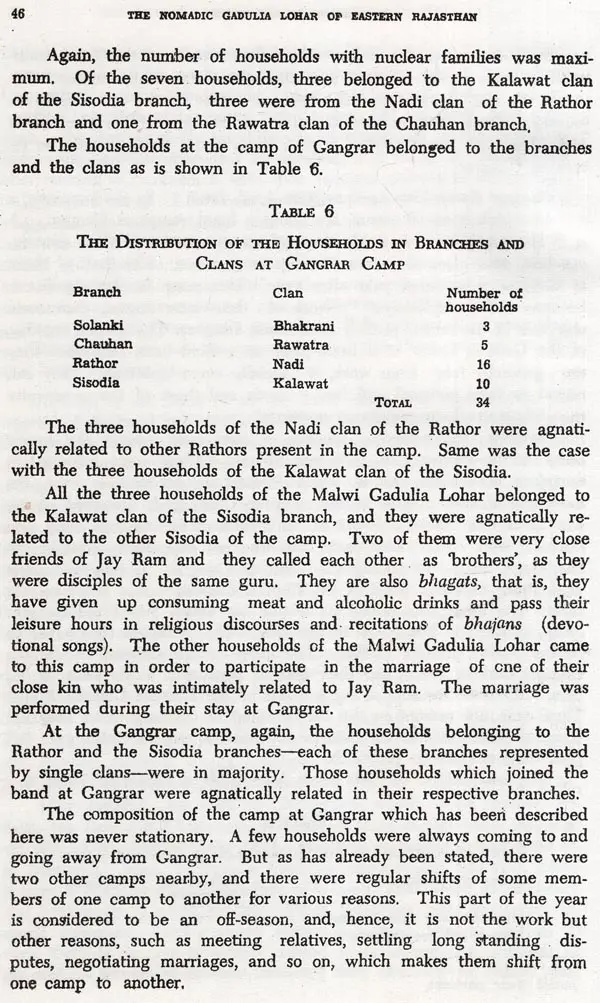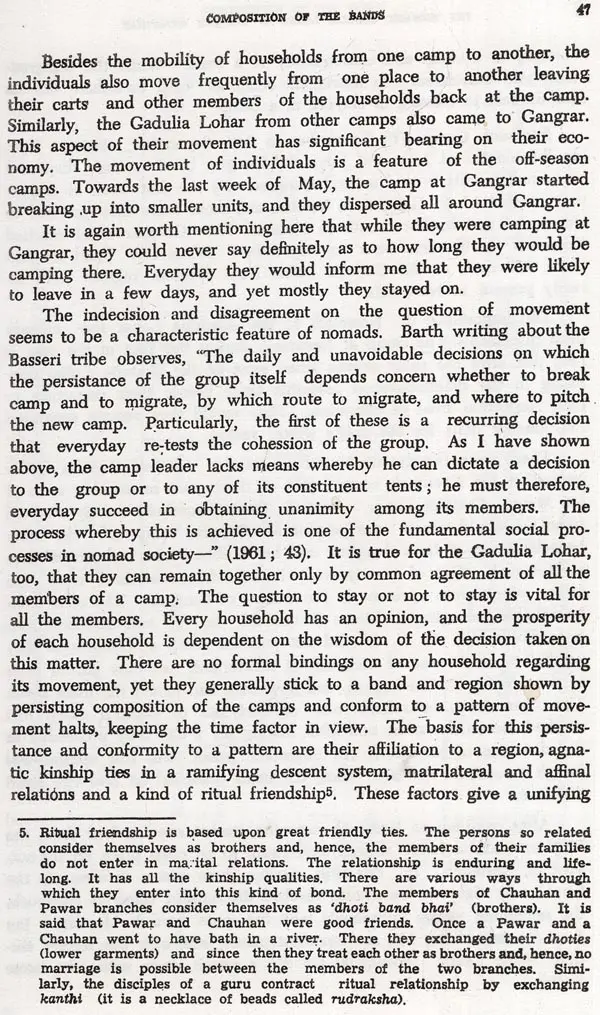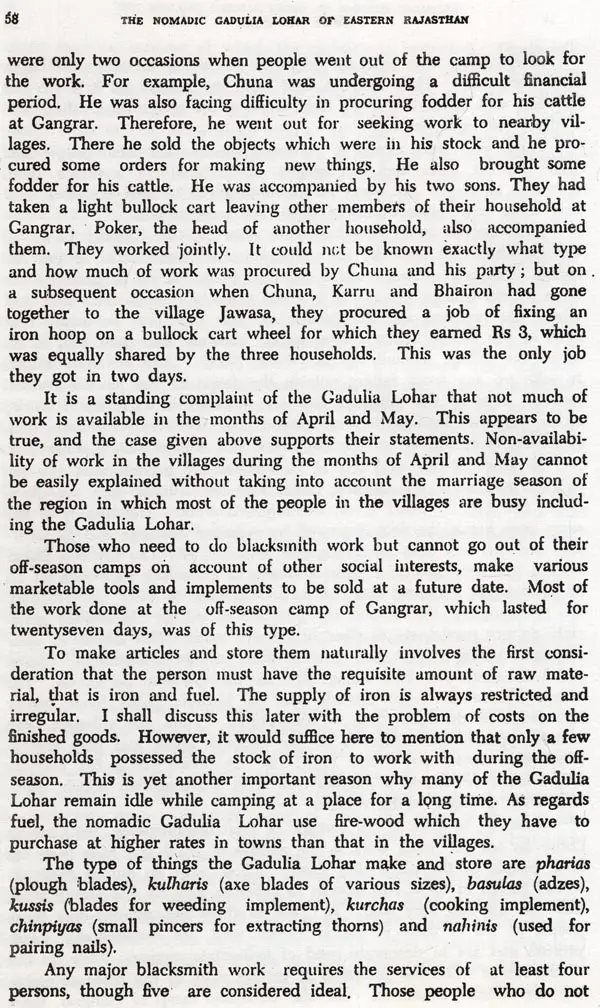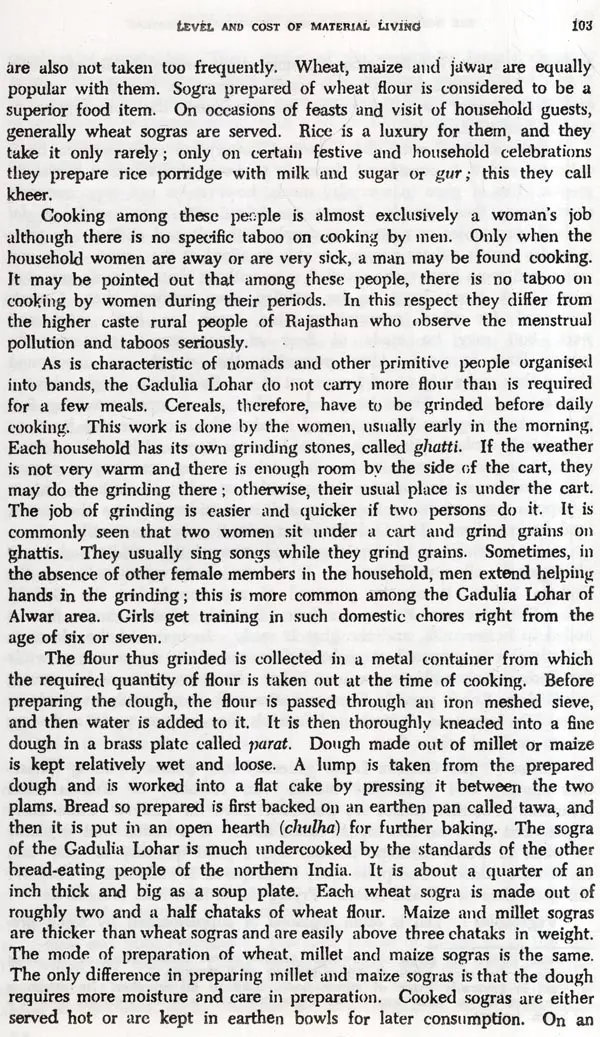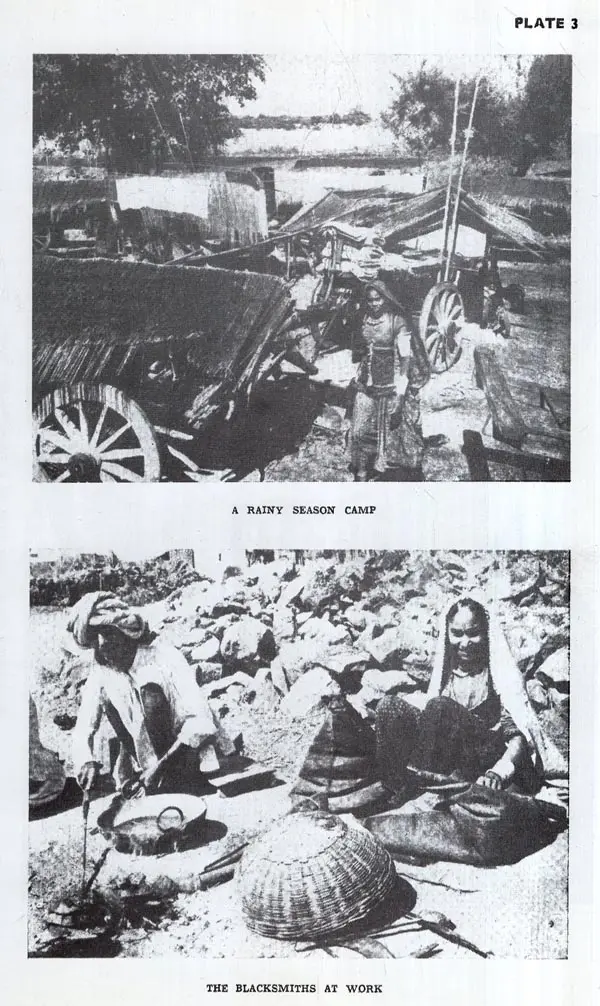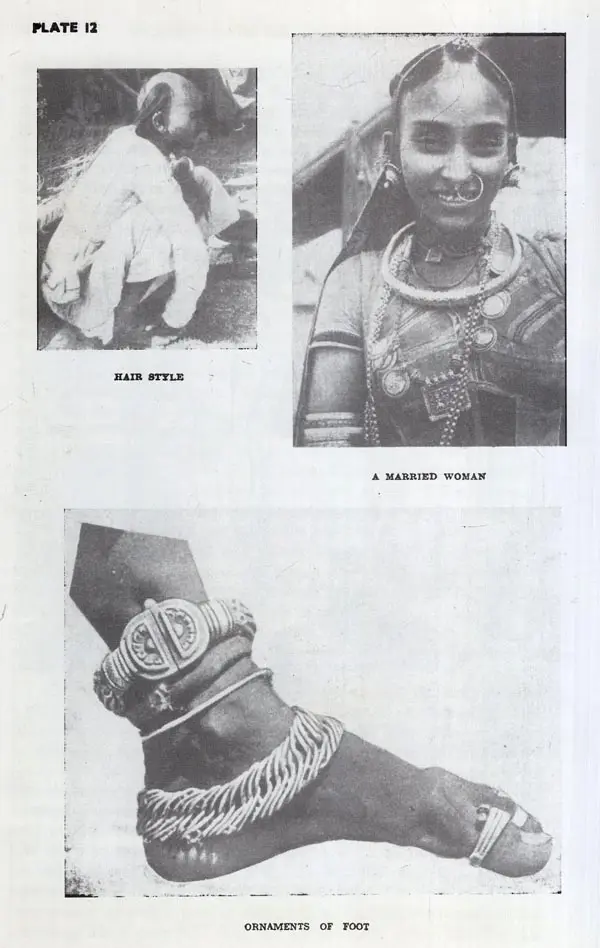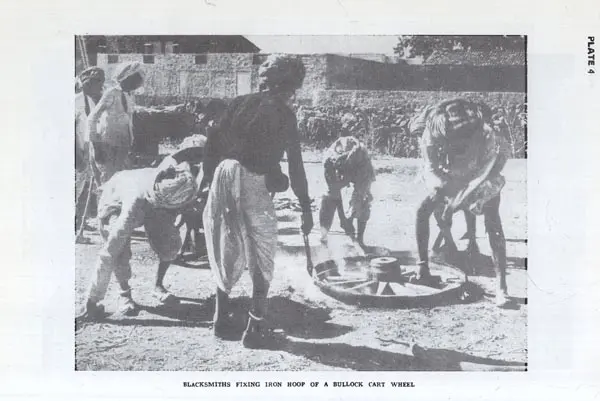
The Nomadic Gadulia Lohar of Eastern Rajasthan
Book Specification
| Item Code: | UBF163 |
| Author: | Promode Kumar Misra |
| Publisher: | Anthropological Survey of India, Kolkata |
| Language: | English |
| Edition: | 2010 |
| Pages: | 225 (B/W Illustrations) |
| Cover: | HARDCOVER |
| Other Details | 9.50 X 6.50 inch |
| Weight | 620 gm |
Book Description
In 1961, late Professor Nirmal Kumar Bose, the then Director of the Anthropological Survey of India, invited us, the young research workers, to discuss the future research programmes of the Survey. This team had already successfully completed a programme conceived and directed by Prof Bose. This was a study of the distribution of material traits at all-India level. This work was outstanding in its own right, and, at the same time, it gave an intensive training and an inspiration to the young scientists to know their native soil and understand the facts of life in a broader perspective. Prof Bose then intended to carry forward the earlier enquiry at deeper, intensive and specialised levels. In this meeting, again he gave some brilliant and original ideas of research. Fruitful completion of some of these researches have proved in abundant measure the brilliance of Prof Bose's mind, his deep under- standing of the Indian situation and his approach which was creative, endogenous, and not borrowed. In that meeting he inspired me to undertake research among the nomads. He said that there was a great variety of nomadic people all over the country. The nomadism of these people is a unique feature of the great Indian civilization but incidentally no anthoropologist had paid much attention to them.
In the following year, I was on my way to Rajasthan to study the Gadulia Lohar on which is based the present work. Since then I have been involved in carrying out researches among the various nomadic groups in different parts of the country. My only and the greatest regret is that I could not present this work in printed form in the lifetime of Prof Bose.
Nomadism: A considerable number of nomads still exist in Wester Asian countries (Awad 1932; 335) and elsewhere. India too has a large number of people who lead the wandering way of life. The nature of their wanderings differs, and so also their means of livelihood. There are bands of people who move throughout the year from place to place; whereas some others move out only in certain seasons of the year, either on account of the rigours of climate or for some other reasons, but have permanent dwelling places or holdings to which they periodically return after the wanderings (Misra 1970; 150-97). The repeated shifting of habitat in search of subsistence has been termed as nomadism. The repeated movement of one group of people from one place to another is based on realistic considerations having a stipulated direction and concentrating themselves around certain centres of operation for obtaining the livelihood (Thurnwald 1933; 390-92, Bacon 1954; 54, Krader 1959; 499). Nomadism assumes different forms, depending upon climate, topographic conditions, resources available, the means of livelihood chosen by the wandering group, and the preferences of the settled population. In India there are several types of nomadic groups engaged in a variety of professions, like snake charmers, monkey and bear displayers, acrobats, quack surgeons, hunters, food gatherers, artisans, pastoralists, and traders (Luiz 1961; 204-95). Some of them combine more than one occupation, they may be tradersartisans or traderpastoralist, and so on. The different forms of nomadism have been classified as true nomads, semnomads and 'semisedentary, depending upon the nature of movement (Bacon 1954; 54). Bacon defines the true nomads as those people who dwell round the year in nonpermanent dwellings and who practise no agriculture. Seminomads are those who plant a few crops at their base camps before moving out on seasonal migrations but they normally live in portable or temporary dwellings round the year. The 'semisedentary' live in permanent villages during a part of the year and wander for the rest of the period (op. cit.). There may be still more variant forms of movement. However, I have not attempted here to make a classification of the nomads in such fixed categories. The point which I want to stress upon is that all such forms of nomadism are related to a great extent to the external forces such as enumerated above. These forces condition the way of life of the nomads to a large extent.
**Contents and Sample Pages**
